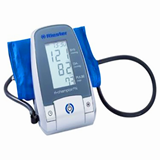Cocaine is the most commonly used illicit drug in western nations, with around 6.4 million users between the ages of 15 and 64 in the USA alone.
Autopsy studies reveal myocarditis - inflammation of the heart muscle - in around one in five cocaine addicts, and it is thought that a quarter of non-fatal heart attacks among the under 45s are associated with cocaine, say the authors.
Myocarditis often causes chest pain and heart failure. And it can prompt fatal and non-fatal heart attacks, but without the blocked/narrowed arteries typical of ischaemic heart disease.
The researchers wanted to find out if there was any tangible evidence of heart damage among long term cocaine users who had no history of heart disease and no symptoms of heart problems.
They assessed the heart health of 30 long term cocaine users who had entered a residential drug rehab programme, 48 hours after they had last used.
The group comprised 25 men, and the average age was 37.One in five was infected either with the hepatitis C virus or HIV.
Over half the addicts (16) also used other substances, such as opioids, including heroin, and alcohol (ethanol).They had been using for an average of 12 years, and admitted to consuming around 5.5 g of cocaine every day.
The most popular method of getting high was by snorting the drug, but 10 said they injected intravenously and two said they smoked it (crack cocaine).
The researchers applied a comprehensive series of tests to pinpoint any abnormalities in the structure and function of the heart.
These included measuring levels of tell-tale chemicals in the blood, monitoring electrical activity over 24 hours (ECG), exercise stress tests, and magnetic resonance imaging of the heart, known as a CMR.
Although heart function was normal in all the addicts, localised abnormalities were found in 12. And CMR picked up a high prevalence (83%) of structural damage.
Swelling (oedema) in the lower left chamber (ventricle) of the heart—one of two responsible for pumping blood around the body—was seen in almost half (47%). Oedema was associated with higher consumption of cocaine.
CMR also picked up tissue scarring (fibrosis) in almost three out of four (73%) addicts, possibly as a result of a silent heart attack, or toxic damage, say the authors.
Oedema is an indicator of recent damage and is reversible, but fibrosis is not, say the authors.
Viral infection and multiple drug misuse could have contributed to the heart damage seen, say the authors. But only two of the participants with a viral infection had myocardial damage, and this was also found in half of addicts using only cocaine.
















